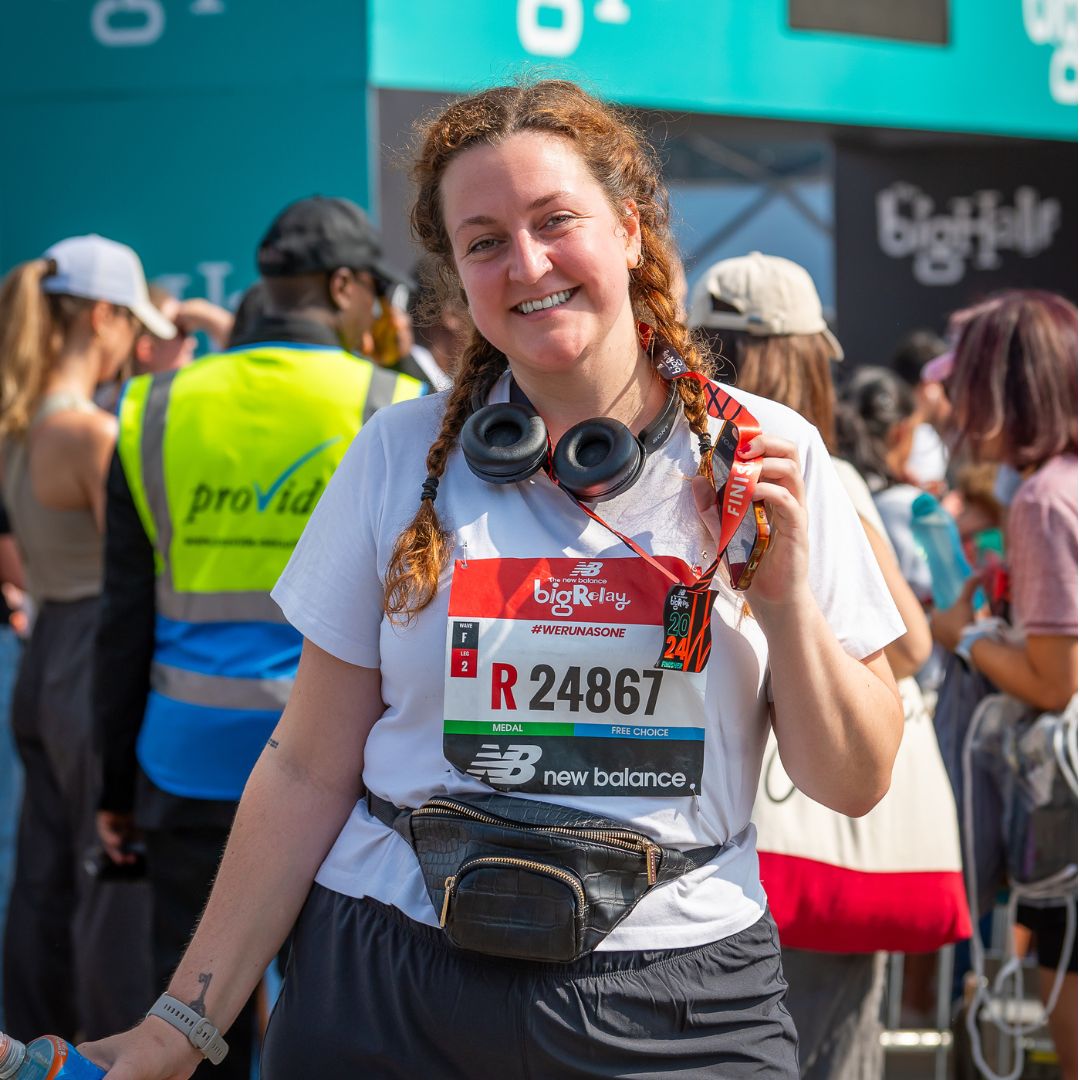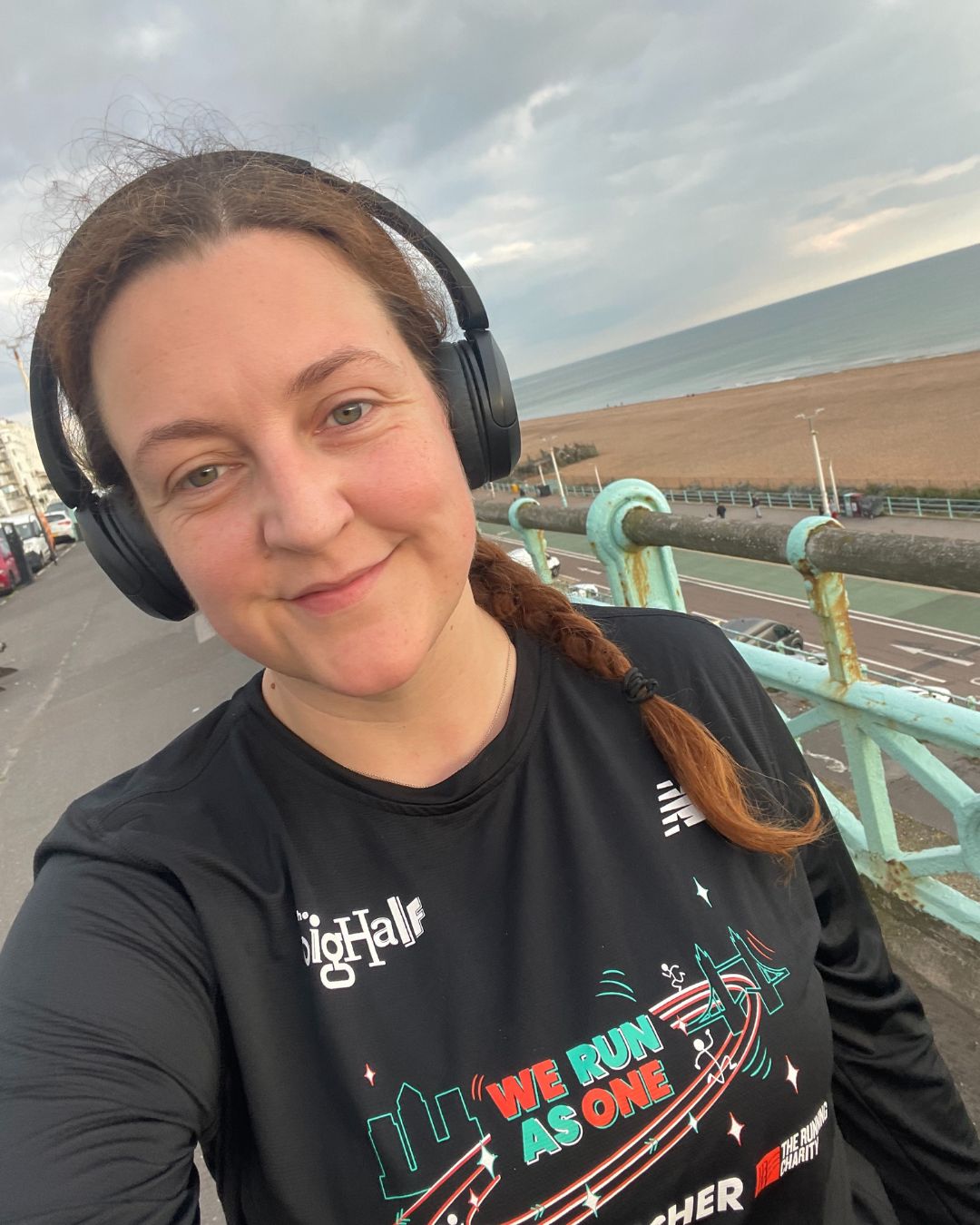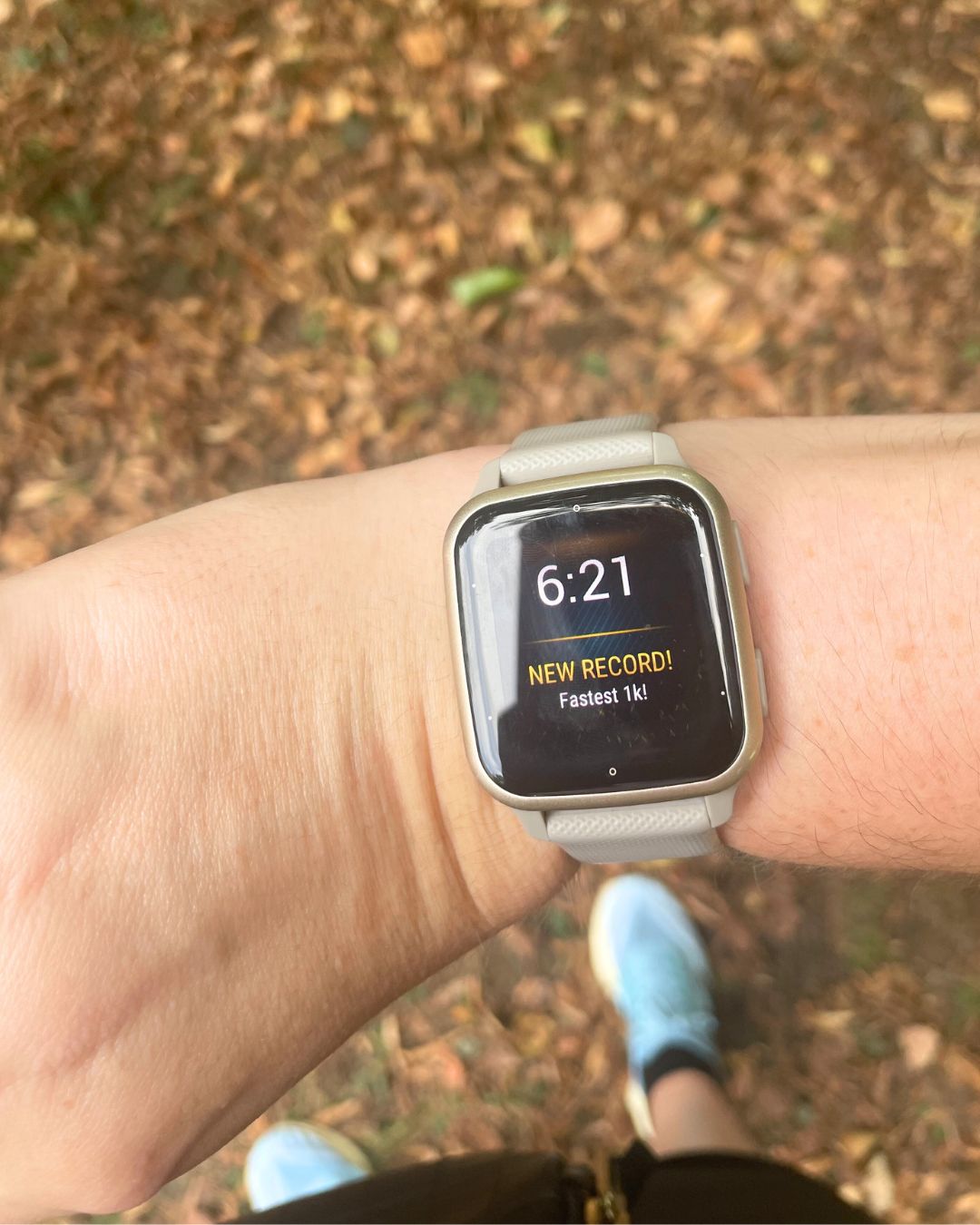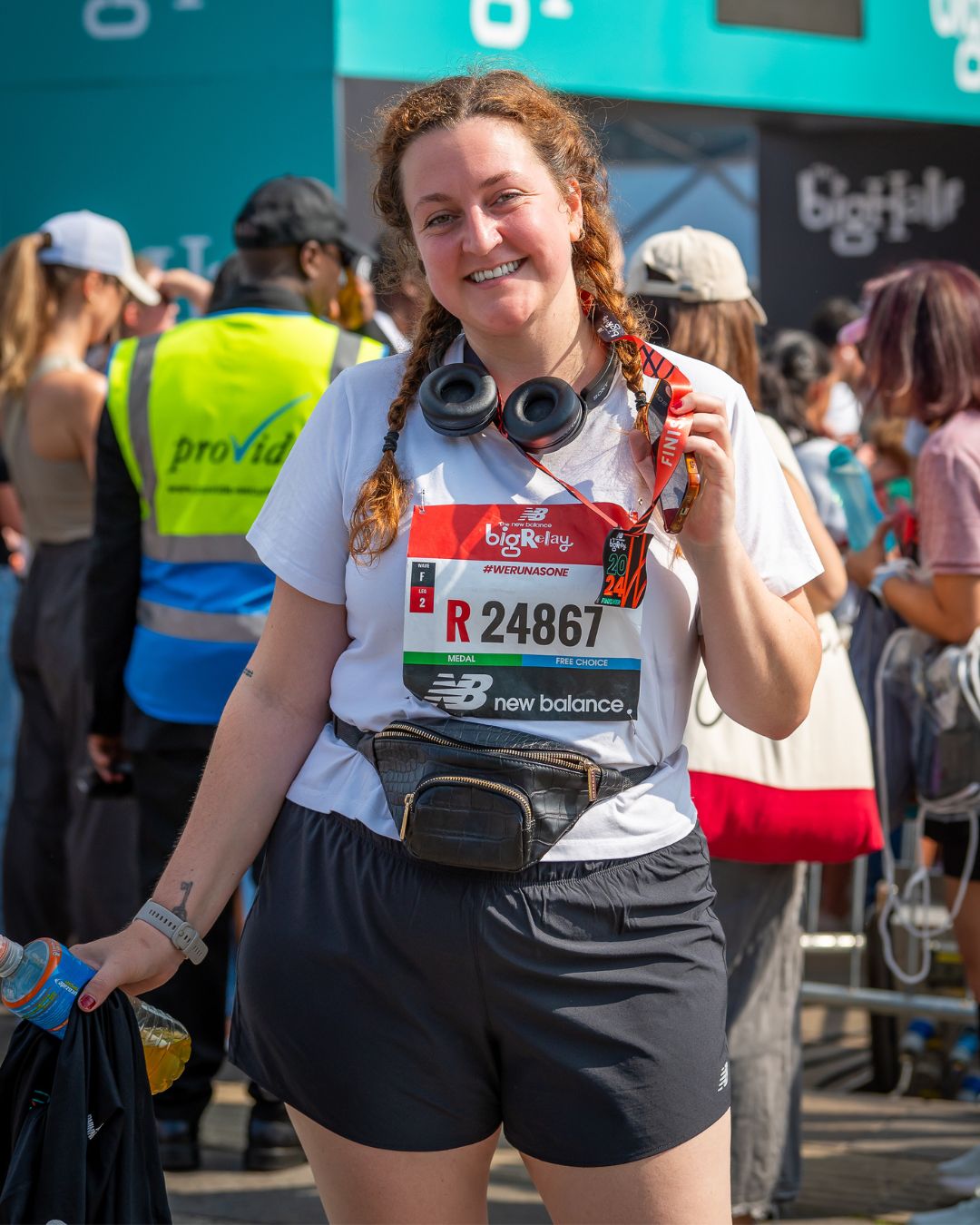
I can’t tell you exactly how many times I’ve tried to enjoy running over the course of my adult life, but let’s just say that weeks one to five of the Couch to 5k training plan are irreversibly etched into my memory. I've read countless guides on how to run a mile without stopping, as well as trying fitness apps, online plans, and just plain winging it to see what happens (answer: sore calves). Every time, without fail, I’d lose interest after a few weeks, become frustrated that I was constantly gasping for air, and abandon the idea for six months.
Still, my interest would inevitably be piqued when I’d see runners gliding effortlessly through the park on a Sunday morning, or while cheering for my impressive friends smashing half marathons, or when I’d watch a video of someone on Instagram talking about the many benefits of running and how it'd had a monumental impact on their mental health. And it’s free! And there’s this incredible feeling you get afterwards called a "runners high"! Honestly, the idea of experiencing euphoria after fighting for my life on a run sounded fake. The only feeling I was becoming increasingly familiar with was when I laced up for attempt no. 147 was burning lungs with a side of impatience. So last year, when several life lessons taught me that I didn’t have to keep doing things I didn’t enjoy, I made peace with the fact that it just wasn’t for me.
But little did I know I had one last try in me, and - spoiler alert - it stuck. At the start of the year I moved to Brighton, and with the seafront just minutes from my flat, I’d enjoy daily walks along the sparkling water as winter shook itself off and spring crept in. I imagined how nice it might feel to run under the increasingly blue skies without putting pressure on myself to struggle for minutes or miles to "make it count". And if I actually listened to my crying lungs when they called out for a walk break, it might - just maybe - feel good.
So, I grabbed my running trainers and went for it - and suddenly, with the intention to just see how it felt, I realised that the dream wasn’t over quite yet. Instead of reverting to the beginner running tips that hadn’t worked for me in the past, I decided to try something new. I'd noticed that the Garmin Venu Sq 2, a fitness tracker that I'd already been using to track workouts, offered tailored running training plans from certified coaches, so I downloaded a 5k plan and crossed my fingers. Spoiler alert: I'd go as far as to say it's changed my life, but more on that if you keep scrolling. For now, don't miss our guides on how to improve your running stamina, how to run for longer, and a top athlete's 10km training tips, to boot. Looking to improve your speed? Interval training is a great place to start.
3 ways the Garmin training plan completely changed my mind about running
1. The unique training plan got me through my first big 5k race with a PB
After scrolling through the training plans offered in the Garmin app, I settled on a 5k race plan with Coach Jeff. Jeff Galloway is a former Olympian who's written books about his run-walk-run method, and I'm told he's turned 300,000 people into runners. In a word - I was sold.
So, I picked a race date roughly 12 weeks away, and the app formulated a plan for me. I selected which days of the week work best for session planning, and they automatically appeared in my calendar. I'd happily give the ease of set-up: 10/10.
The first session was a benchmark run which consisted of a two-minute warm-up, a five-minute walk/run, and a two-minute cool-down. I was already less intimidated knowing that it was just 9 minutes in total and that I could walk whenever I needed to. There were also two 12-minute drill workouts pencilled in for the rest of the week, and the first ten minutes were set for a run-walk exercise which you're free to manage as you see fit.
While some people might prefer to be told exactly how long to walk and run for, I liked the freedom it gave me to stop and start when I needed to, plus it really encouraged me to listen to my body.
The remaining two minutes were listed as "cadence drills." Clueless as to what that meant, I searched the Garmin app and found some helpful videos explaining how to complete this part of the session. For 30 seconds, my steps per minute flashed up on the watch and I was told to aim for 150 - 200, followed by a 30-second walk break, before repeating the drill. While I couldn't quite understand how this would help me to run a 5k, Marie Claire UK's Senior Health Editor Ally Head was really impressed that these drills were included in a beginner's training plan, as she only came to know about more technical aspects of running training years into her own journey.
"Cadence drills and speedwork are quite specialist types of running workouts that you'd normally only do once you were really far into your running journey - that was the case with me, anyway!" she told me. "I just ran, and ran, and ran, always at the same speed, seeing not much improvement in my times.
"But the fact the Garmin watch has made these quite advanced workouts accessible to beginners and also not daunting is absolutely brilliant, in my opinion, as it'll mean you can improve your speed more quickly."
Teamed with one weekly long run - usually with a suggested time or distance to complete - these drills continued throughout the plan.

Three months on, I can confidently say that they're largely responsible for getting me over the finish line when I ran my first big 5k race in September. Other than reluctantly slogging through two local 5k's in 2018, I'd never run in a big race - but I joined the MC UK team for the New Balance Big Half Relay with my newfound fondness for it. Not only did I get a PB for my overall time, but I finished it 12 minutes quicker than my predicted time and managed to get my fastest-ever kilometre and mile. The drills taught me how to pace myself when I started feeling tired and breathless, and instead of stopping completely for a walk break, I can recognise when I just need to slow down and return to the rhythm of my feet on the ground.

2. It taught me to focus on how runs felt, and not on how much I could "do"
Looking back, my many failed running attempts were often laced with unhealthy expectations - whether it was part of a grand plan to miraculously reach athlete levels of fitness, or to physically change my body. It had always felt really, really hard (I'm still haunted by the humiliation of the year 7 bleep test), and it never crossed my mind that running could be a form of gentle movement, or that you could do it purely to feel good mentally. But just two weeks into the Garmin Coach training, I noticed that the difference this time was my mindset: the sessions were about mindful running and helping me to focus on how each run felt.
One of the things I loved about the training plan is that the sessions never felt intimidatingly long, and even as the mileage crept up it always seemed like an achievable challenge. The simple instruction to "run/walk" was perfect for me - I didn't feel like I was forcing myself to push for longer than my body wanted, and I learned to acknowledge how I felt as I was moving. Was I too breathless to keep running, or could I just adjust my cadence to catch my breath? Were my legs feeling too heavy to get to that lamppost, or could I push on just a little bit more? This has been a really transformative learning, and actually something I've been able to apply to other workouts I also enjoy.

3. The Garmin stats are incredibly insightful for running newbies
While the running pros will be well-versed in all things pace, speed and splits, in the beginning, the insights were all new to me. At first, I only really understood that when the Garmin gleefully buzzes after a session it means you've got a personal best - and that was joyous enough. It adds the stat to a bank of personal records, and this really spurred me on to keep going.
But as time went on, I started to learn more about how my runs looked with the data my watch had gathered. I could see how my speed and distance changed during each interval, as you're given a really thorough breakdown, and the walk detection feature showed me that I was running more and more each week. There's also a set of colourful graphs illustrating pace, heart rate and cadence, and personally, I found them to be really encouraging as I was able to see exactly how much I was improving.
Overall, the Garmin Venu Sq 2 has played a huge part in getting me to stick to a training plan that works for me - and it achieved the impossible by turning me into someone who actually enjoys throwing on my trainers and going for a run. So much, in fact, that since completing the 5k I've downloaded a new Garmin training plan to reduce my time by four minutes. Wish me luck...
Shop Jadie's running essentials now:
This is the Garmin I used to train with, and I can't recommend it enough. While it's an investment, it's seriously easy to navigate and set up, and also comes with loads of brilliant plans to help get your training on the road. For more MC UK tried, tested and approved trackers, scroll our edit to the best fitness trackers, here.







